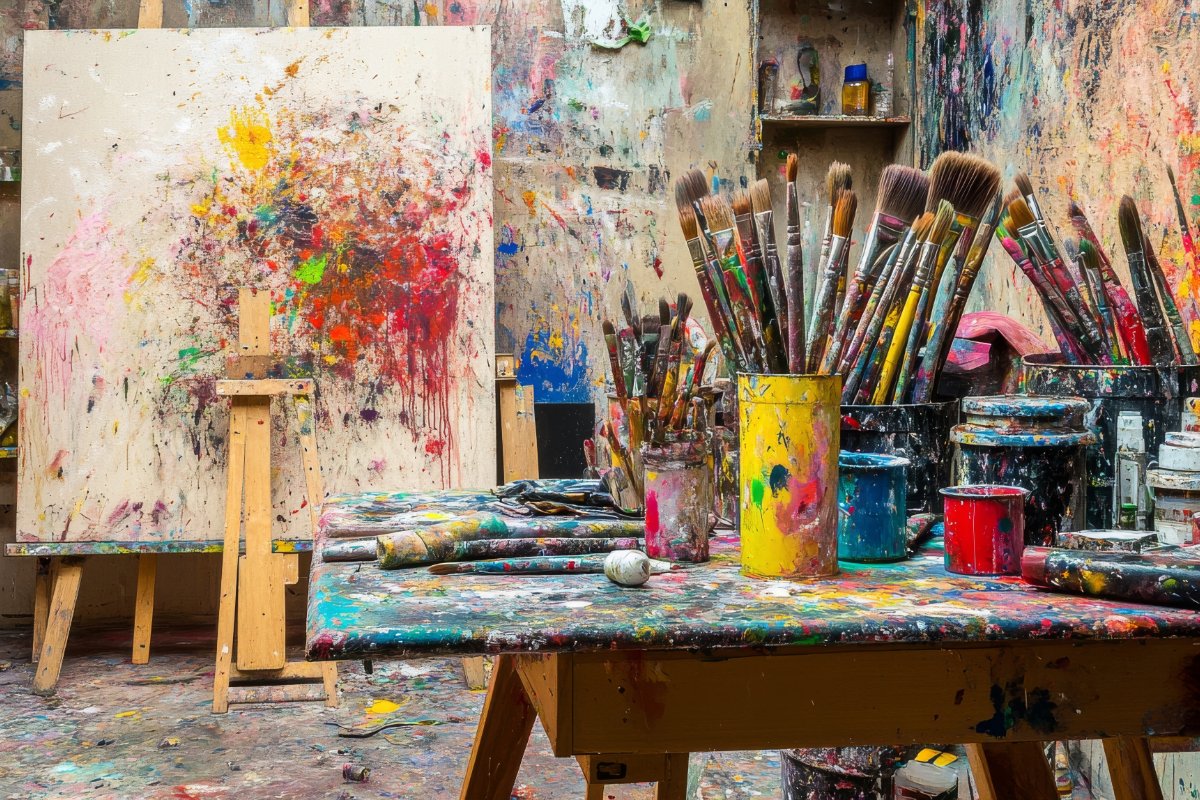Creating Textures: Techniques for Acrylic Paintings
Have you ever looked at a painting and felt like you could reach out and feel it? That’s the magic of texture—it pulls you in, adds dimension, and makes a piece of art come alive. In acrylic painting, texture can transform a flat canvas into something dynamic, expressive, and visually rich. Whether you're building subtle layers or bold, sculptural strokes, playing with texture is one of the most exciting ways to add interest and emotion to your work.
Today I’m sharing a few of my favorite tools and techniques for creating texture in acrylic paintings—some traditional, some unexpected, and all beginner-friendly.
1. Saran Wrap
It may sound like something that belongs in your kitchen, but saran wrap is a surprisingly fun texture tool! Simply press it into wet paint and scrunch it lightly. Once you peel it off, it leaves behind crinkled, organic patterns that resemble natural elements like leaves, rocks, or water ripples. It’s great for backgrounds or atmospheric effects when you want to break up large, flat areas with texture.
2. Layering Paint
Layering is one of the simplest ways to build texture—and it’s incredibly effective. By adding multiple layers of acrylic paint (letting each one dry before the next), you can create depth and richness. Use thicker applications or different brush strokes with each layer to increase the tactile quality. Layering also gives you the freedom to play with transparency, color peeking through color, and even a little controlled chaos.
3. Palette Knife (My Personal Favorite!)
If you’ve been following my work, you already know—palette knives are my favorite way to add texture. I love experimenting with different sizes and blade shapes to create thick, expressive marks that brushes just can’t replicate. From sweeping strokes to chunky dollops, palette knives give your painting a sculptural, physical quality. You can use them to apply thick paint (called impasto), scrape away layers, or blend colors directly on the canvas for a dynamic, energetic look.
4. Stamps
Stamps are a great way to repeat textures and patterns with ease. You can use store-bought stamps or create your own using carved rubber, foam, or even found objects like bubble wrap or leaves. Try stamping into wet paint for a more subtle, embedded effect—or stamp over a dry layer for a crisp, graphic pop. Either way, it’s a playful way to add rhythm and variety to your piece.
5. Stencils
Stencils offer control and precision, making them perfect when you want to add detailed texture in a specific shape or pattern. You can use them with thick paint or modeling paste to create raised designs, or with thinner acrylics for a layered, semi-transparent effect. They're especially fun for incorporating geometric shapes, florals, or repeat motifs that contrast beautifully with more freeform painting styles.
6. Acrylic Liquid Paint
While most people think of thick paint when they think texture, fluid acrylics bring their own kind of magic. By dripping, pouring, or splattering liquid acrylics over textured surfaces, you can highlight the highs and lows of your piece in unexpected ways. It flows into crevices and around raised elements, enhancing texture instead of covering it up. I love using it to create movement or to add another layer of visual depth.
These are just a few of my favorite ways to create texture in my paintings. Just look around your space to find more ways to create texture: medicine cap, bottom of a cup, fork tines, the bottom of your shoe, the list goes on-and-on.
Why Texture Matters in Art
Texture doesn’t just make a painting interesting to look at—it creates an experience. When a surface has variation and depth, it draws the viewer in. It feels more alive. A painting with texture tells a richer story and engages multiple senses, even though we’re just looking with our eyes. Whether it’s bold and sculptural or soft and subtle, texture helps guide the eye, evoke emotion, and add complexity to a piece.
Next time you’re painting, I encourage you to try one of these techniques—especially the palette knife (you might fall in love with it like I did!). Embrace the mess, explore different tools, and let texture bring your work to life.
Happy painting!
—Annie 🎨


